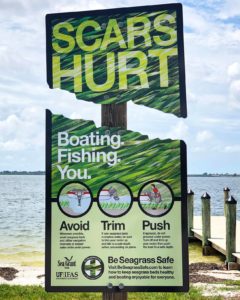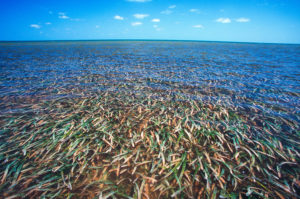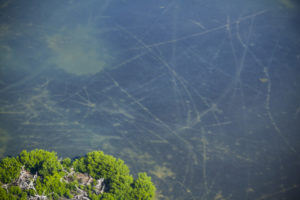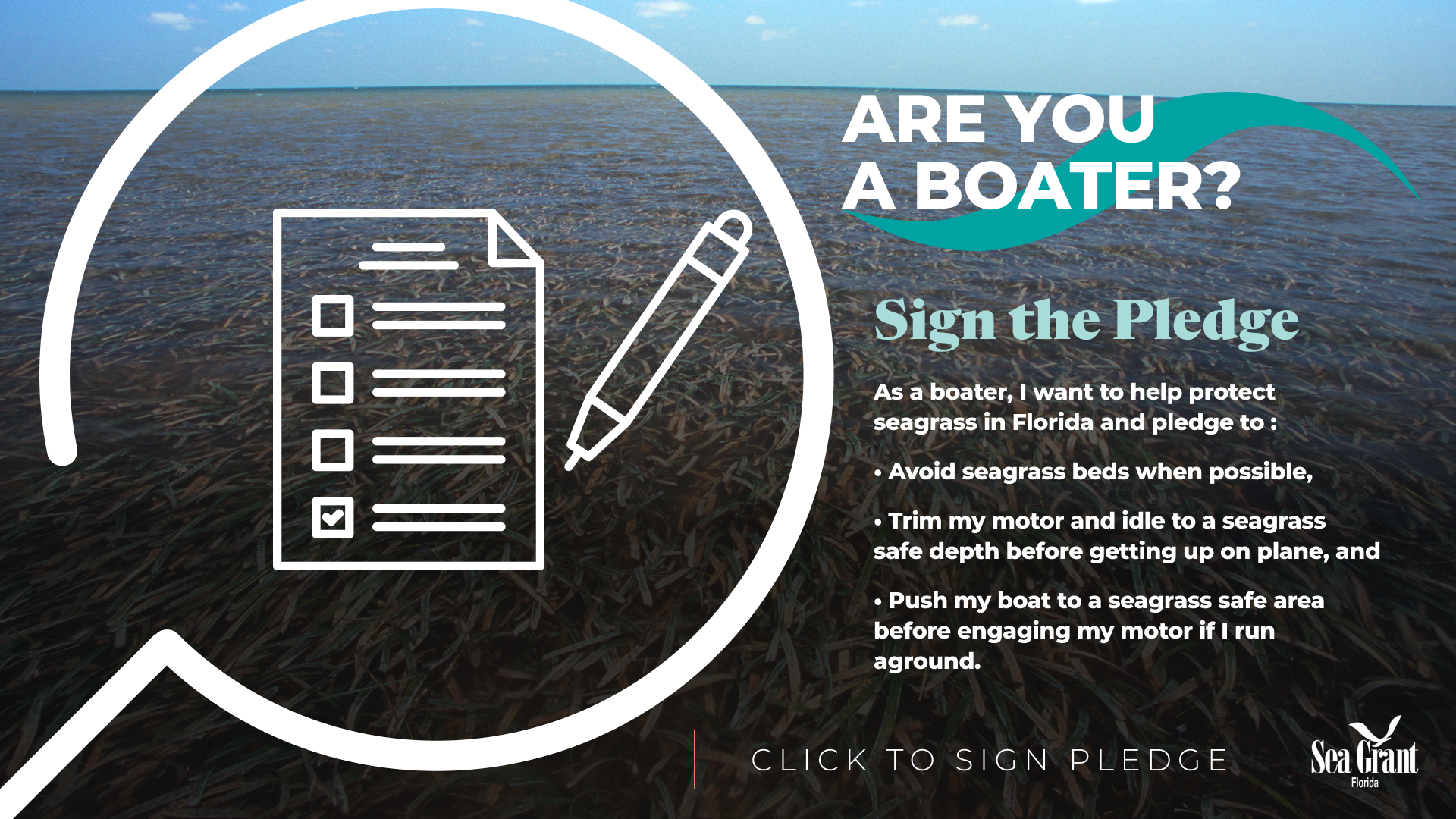
Over 28 ‘Scars Hurt’ outreach signs are placed at boat ramps around Florida and internationally in Tasmania, Australia and the Seychelles. Interested in sponsoring a sign in your community? Email beseagrasssafe@gmail.com.
Since 2015, Florida Sea Grant and UF/IFAS Extension’s Be Seagrass Safe campaign has educated Florida’s boaters and coastal communities alike about the devastating impact of propeller scarring on seagrass. Today, over 1,600 boaters have taken the pledge to help protect seagrass while enjoying Florida’s rich and expansive coastline.
Why is the health of Florida’s seagrass so vital?
Seagrasses play a vital role in sustaining a healthy, resilient coastal ecosystem. Densely rooted into the sediment of the seafloor, seagrass cleans its surrounding water and helps take carbon dioxide out of the atmosphere. Thanks to its anchored roots, it also reduces erosion and improves the resilience of coastal communities against natural hazards, like winds, waves and floods generated by tropical storms and hurricanes.
Seagrasses also act as an important food source and habitat for marine mammals, like manatees and sea turtles, and play a crucial role in fostering the adolescence of many fish species. Approximately 70% of Florida’s fish species spend at least part of their life cycle within seagrass communities.

Did you know seagrass captures carbon up to 35 times faster than tropical rainforests? Even though it only covers 0.2% of the seafloor, seagrass absorbs 10% of the ocean’s carbon each year, making it an incredible tool in the fight against climate change. Source: WWF
“Altogether, seagrasses are estimated to produce thousands of dollars in ecosystem services per acre every year, but just as important are the quality-of-life improvements, the beauty of a healthy environment, and a future where our children can experience clean water and memorable fishing experiences,” says Conor MacDonnell, who serves as Florida Sea Grant’s Coastal Agency Liaison. For MacDonnell’s dissertation research, he investigated multiple seagrass restoration techniques, including the restoration of seagrass scars, in various subtropical environments in Florida.

The bad news is the current extent of the damage is considerable throughout Florida. Good news: Seagrass scarring is 100% preventable.
Do seagrass scars heal?
Yes, however, it can take up to a decade for seagrass to recover after scarring. If repeatedly hit, some seagrass may never reestablish itself. Restoration efforts funded by Florida Sea Grant and led by its affiliate faculty are working to examine the impact of scarring and restoration alternatives on recreational fisheries and the marine economy, and also researching the legal framework for seagrass restoration alternatives.
Fortunately, research proves that ecosystem services do return to damaged areas through restoration, albeit it remains costly and requires many years. The practice of precaution to avoid damaging seagrass in the first place takes a boater just a few minutes, explains an informational tri-fold produced by the campaign’s outreach team.
Once seagrass is lost to poor boating practices such as prop scarring and grounding, Florida loses a resource vital to its economy. Protect it today and take the pledge at the image below.




